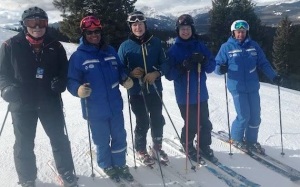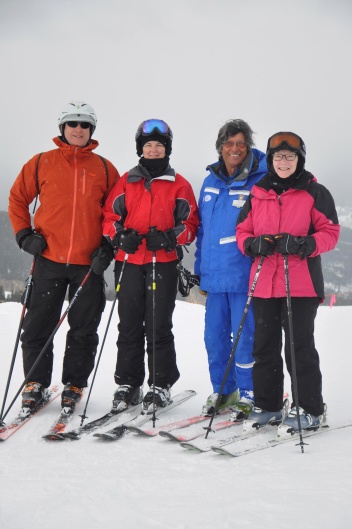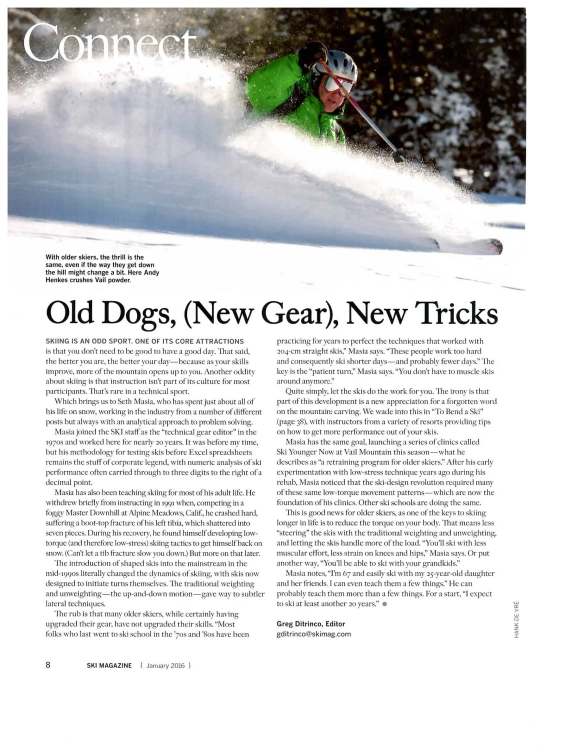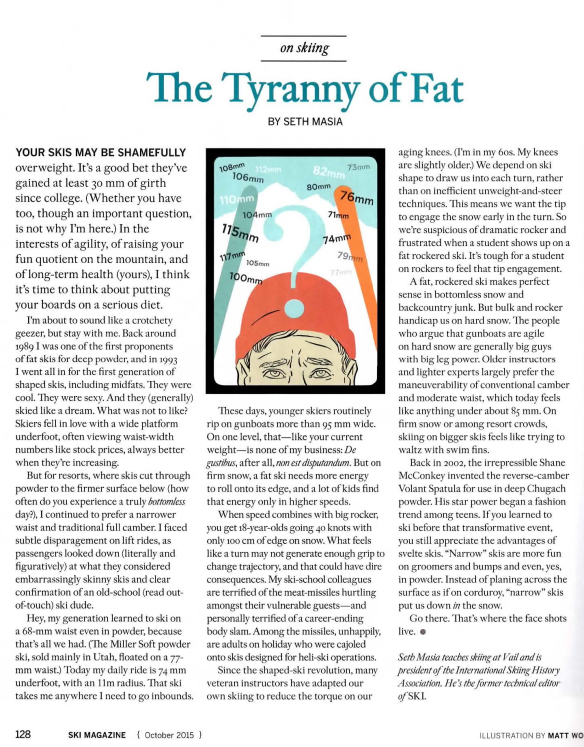Last week I spent a day skiing at Snowmass with an old friend. I won’t say how old, but roughly my age. Kathy grew up skiing Vermont, has been skiing regularly ever since, has stayed in shape and has skills. Real high-speed cruise, carve-on-ice skill, achieved in the era of 68mm straight skis.
She brought her own boots and poles but was in the market for new skis, so she rented demos. If Kathy liked the ski, the shop would apply the rental fee to the purchase price. The shop recommended an 88mm waist.
Up on the Burn, Kathy skied easily, in fine balance and every bit as elegant as she was in her 20s. What she couldn’t do was to set and hold an edge. Every turn was a nice smooth speed-control skid from top to finish, and she couldn’t reach the speed she liked without straightlining.
I explained that she needed a narrower ski, so as to engage the edge earlier in the turn and hold it though the full arc. She grasped the mechanics – a narrow ski rolls onto its edge more easily and, more important, more quickly. The carving edge cuts early in the turn, before forces begin to build up. Then, it’s easier to hold the narrower ski on edge and balance on it through the turn.
The problem with a wider ski is that the delay coming up on edge means the skid starts early in the turn, and once started, it’s almost impossible to turn a skid into a carve mid-turn, no matter how high you roll on edge. Regardless of your skills, too much width is a handicap, not an aid.
I recommended she try a ski narrower than 80mm.
So we went back to the demo shop. What do you know – they had nothing in stock under 82mm – nothing for adults, anyway. And the staff, to the last employee, was skeptical. You could see the wheels turning: what kind of crackpot wants a narrow ski?
This is a mystery. Every single instructor in our ski school skis daily, and teaches daily, on race skis or performance skis under 78mm. Yes, in powder, too. But the shop personnel seemed convinced that no civilian could possibly survive on a narrow ski.
Eventually, we found a cheap lightweight 76mm ski from another brand. Kathy tried it for a day and wasn’t thrilled. “It worked better in the bumps and I could carve a turn,” she reported. But the ski felt unstable at the speed she liked.
The following day, in another store, Kathy found a Blizzard Black Pearl 78. Eureka! She loved the ski. It carved, it cruised, it bumped. But they didn’t have it in her length. She found out that an online retailer had her length in stock. So the Aspen stores lost the sale.
Does this tale have a moral? Yes, but whether you’re a good recreational skier or ski shop buyer, I shouldn’t have to explain it further.





